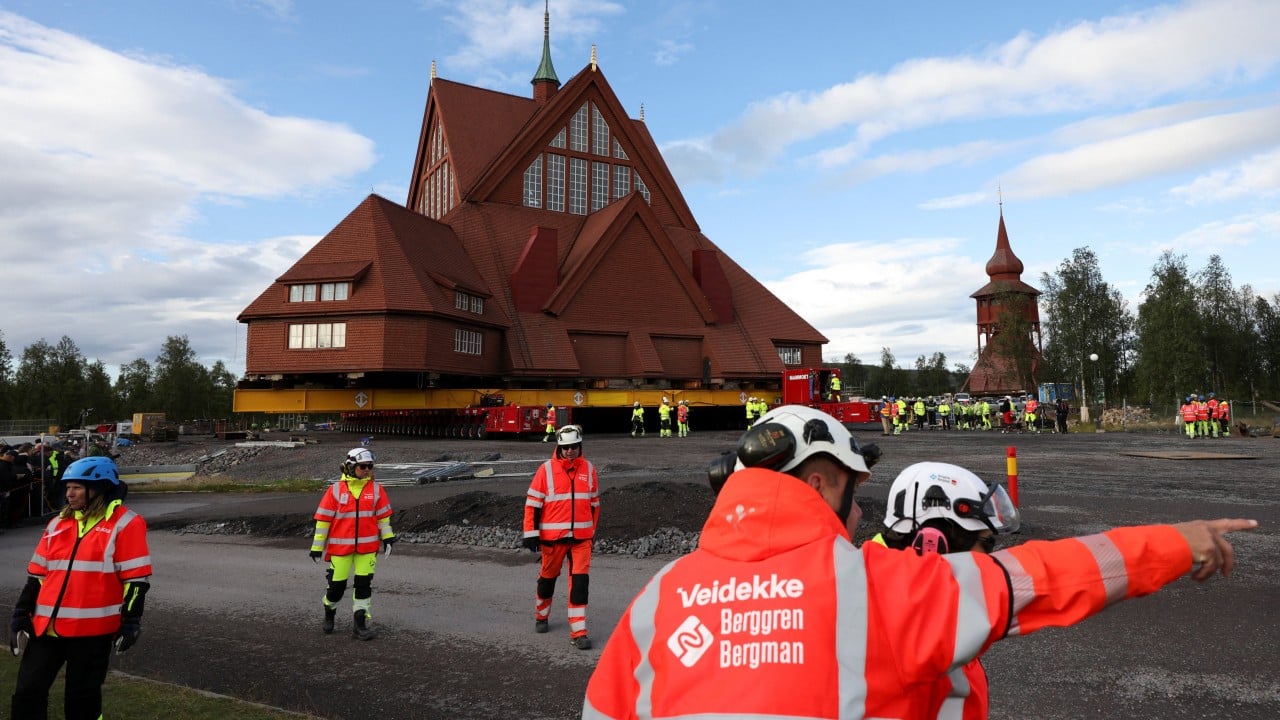With great fanfare, a historic red wooden church considered one of Sweden’s most beautiful buildings began its slow move from its long-time home in the Arctic town of Kiruna on Tuesday to allow the expansion of Europe’s biggest underground mine.
Advertisement
The move of Kiruna’s town centre, including the church, has been in the works since 2004. As the LKAB iron ore mine expanded deeper underground, residents began seeing cracks in buildings and roads. To reach a new depth of 1,365 metres (4,478 feet) – and to prevent Kiruna from being swallowed up – officials began moving buildings to a new downtown at a safe distance from the mine.
Kiruna Kyrka, an imposing 672-tonne Swedish Lutheran church from 1912, is being moved five kilometres (three miles) on remote-controlled flatbed trailers.
A driver, using a large control box, is piloting the church through the route as it travels roughly 12 hours over Tuesday and Wednesday – with a pause each day for fika, the traditional Swedish afternoon coffee break. It’s expected to move at a varying pace between 0.5 and 1.5 kilometres per hour (0.31 and 0.93 miles per hour).
In 2001, the Swedish people voted the wooden church the “best building of all time, built before 1950” in a poll connected to the Ministry of Culture. Built on a hill, so worshippers could overlook the rest of Kiruna, the Swedish Lutheran church was designed to emulate the Sami style as a gift from LKAB, the state-owned mining company.
Advertisement
The Kiruna mine itself dates back to 1910 and the church was completed in 1912. Its neo-Gothic exterior is considered the town’s most distinctive building, and tourists regularly travelled there before it was closed a year ago to prepare for the relocation. It’s set to reopen in the new location at the end of 2026.

